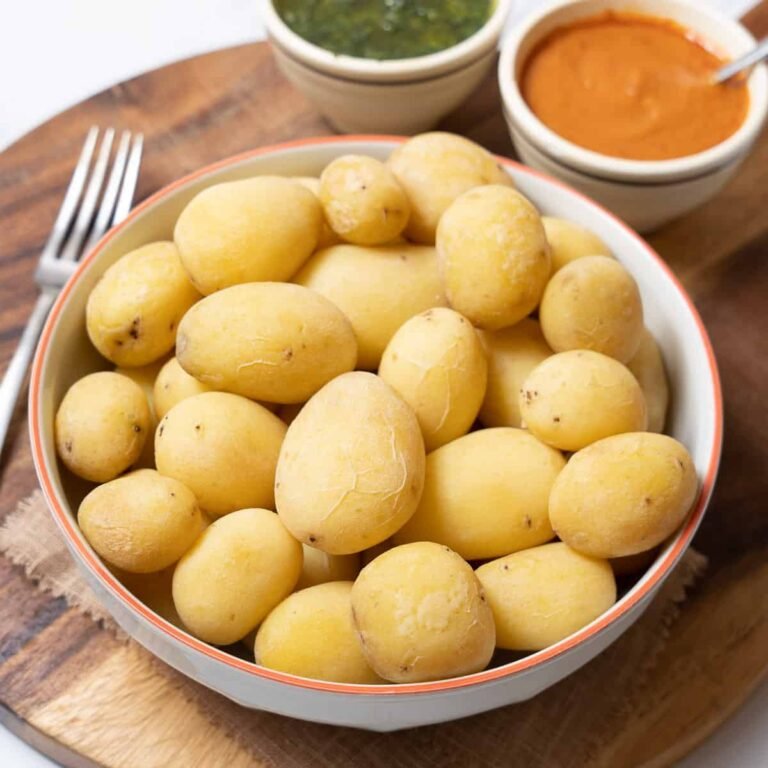
[ad_1]
Is there any dish more representative of the Canary Islands than papas arrugadas? These tiny wrinkled potatoes are a must try when visiting the Canaries, and when done the right way, are truly delightful!
If you love potatoes, make sure to try my recipes for potato croquettes and papas a lo pobre (poor man’s potatoes).
Jump to:
Introduction
You can find papas arrugadas anywhere in the Canaries, whether you’re in Tenerife or La Gomera. But how did these salted potatoes become so famous? Potatoes aren’t even native to the islands!
Spanish explorers returning from the Andes brought potatoes to the Canary Islands in the 1550s. At first, potatoes were cultivated only in botanical gardens, but by the 17th century, they began to be cultivated for food. Locals still call them papas (they’re patatas in mainland Spanish), just as they do in the majority of Latin America.
Looking for the best papas arrugadas in the Canaries? In Tenerife, try Arcon Papas in Puerto de la Cruz or Bodeguita Canaria in Santa Cruz de Tenerife. In Gran Canaria, try La Marinera in Las Palmas de Gran Canaria, and in Lanzarote, try one the traditional bars on the main square of Yaiza.
Ingredients
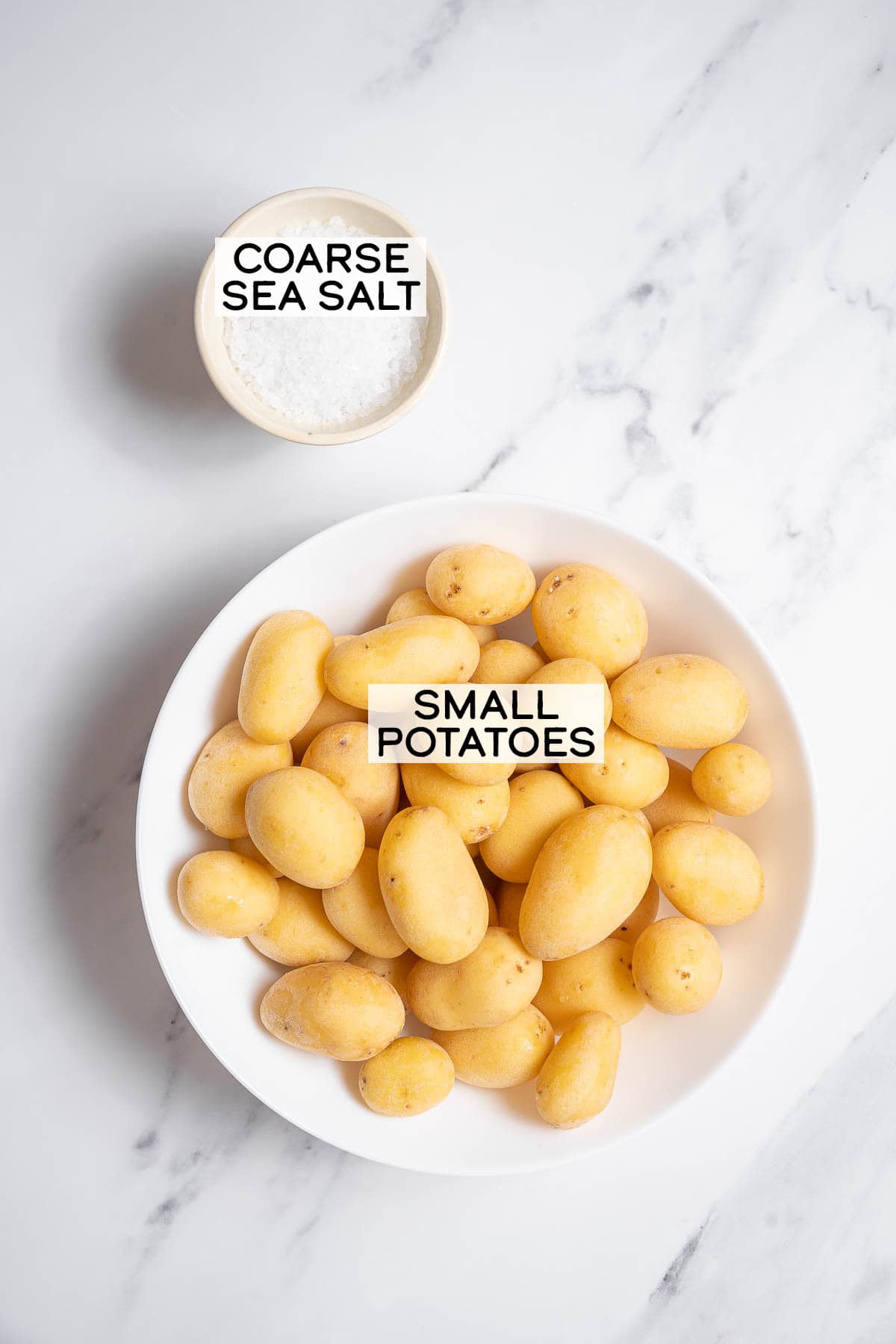
Wondering what ingredients you need to make your own papas arrugadas at home? Fortunately, it couldn’t be simpler!
- Potatoes: The best potatoes to use are Papa Negra from Tenerife or Papa Bonita from Gran Canaria, but any small, quick cooking potatoes will work fine!
- Salt/Water: Traditionally, the locals in the Canary Islands boiled the potatoes in seawater, as fresh water was often in short supply. Experiment with different salt and water ratios to get the barely visible but delicious salty crust on the outside of the potatoes!
See recipe card for full information on ingredients and quantities.
How to Make Papas Arrugadas
If you’d like to see the full ingredients and instructions, scroll to the bottom of the post for the printable recipe card.
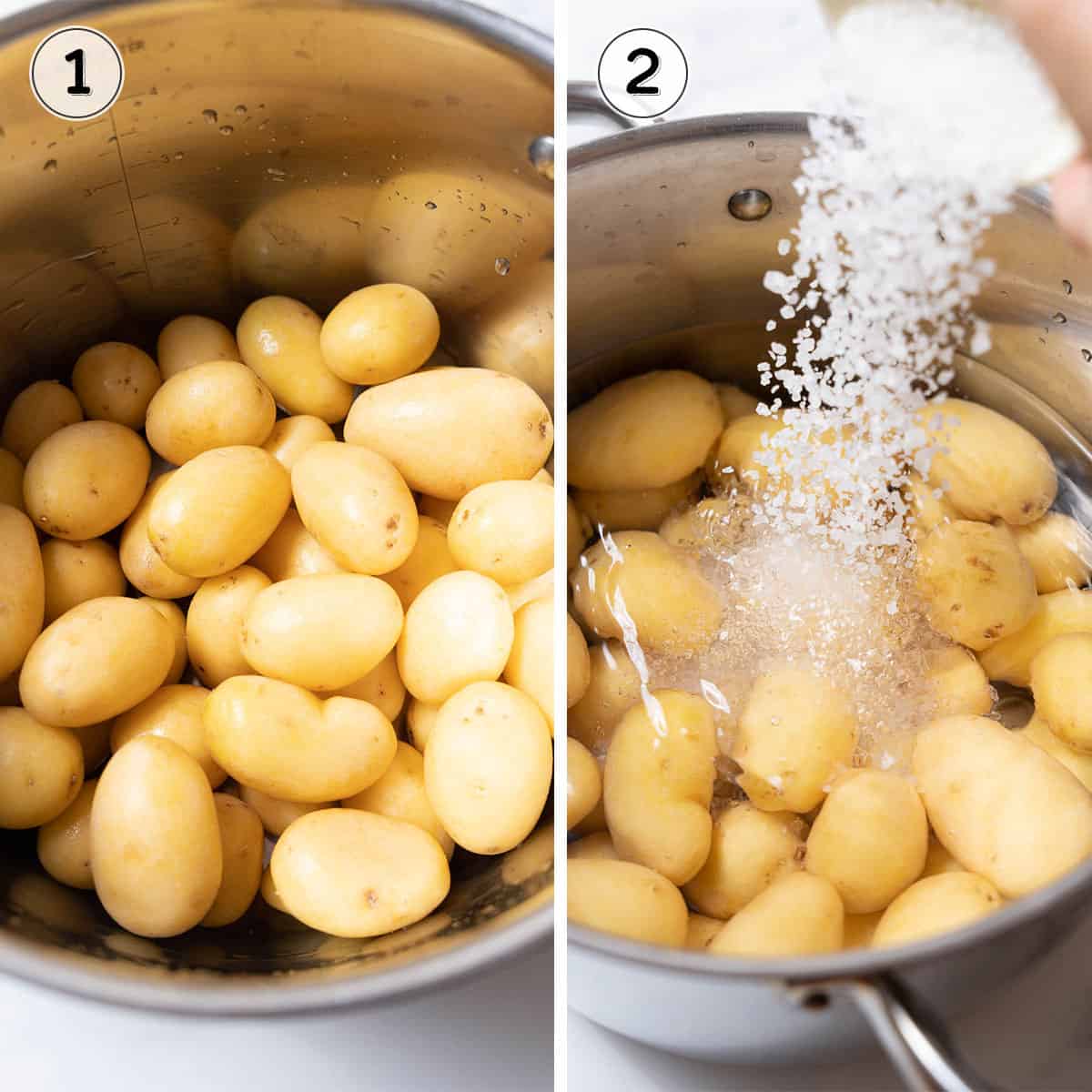
- Thoroughly rinse the potatoes to remove any loose dirt and place them in a large pot. (image 1)
- Cover with cold water and add the sea salt. (image 2)
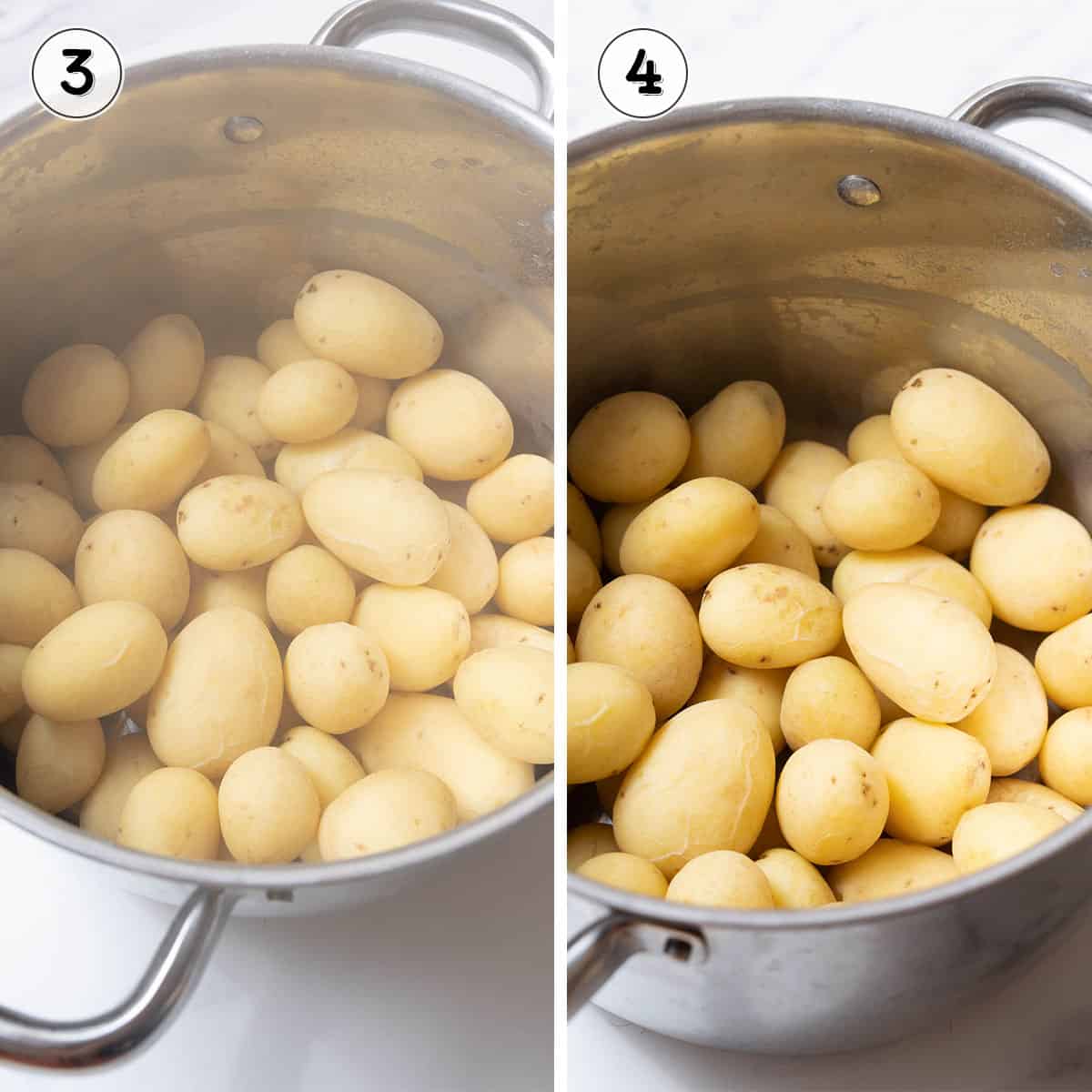
- Bring the pot to a boil and cook until the potatoes are fork tender, about 20 minutes. (image 3)
- Drain the potatoes in a colander, then place them back in the pot and set over low heat until the potatoes are dry and covered in a thin layer of salt. (image 4)
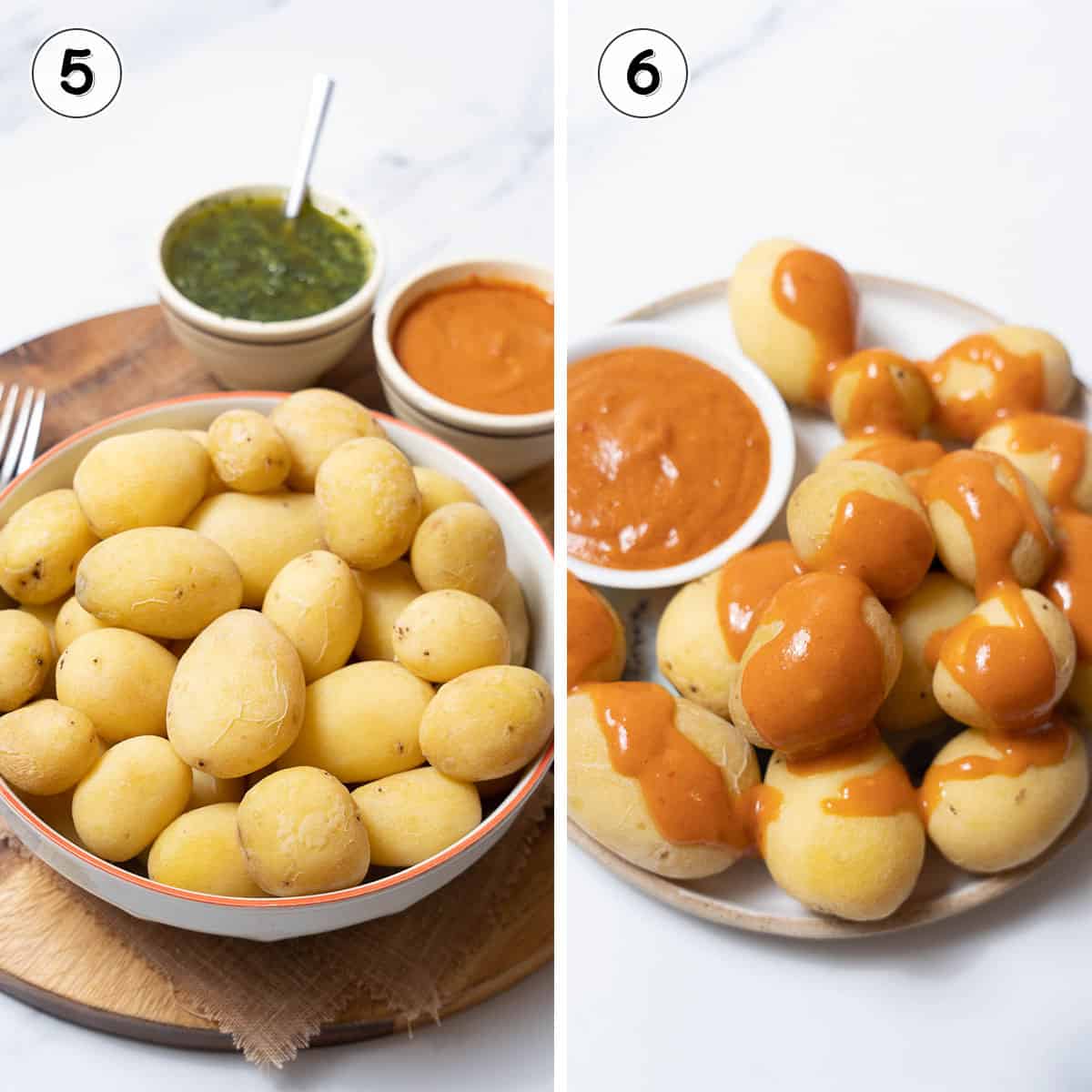
- Place the potatoes in a bowl and serve hot. (image 5)
- Top the potatoes with your favorite mojo sauce for extra zing and color! (image 6)
Recipe FAQs
These famous potatoes from the Canary Islands only take three simple ingredients: potatoes, salt, and water. In fact, the locals would often boil the potatoes in seawater because fresh water was in short supply!
It’s traditional to serve papas arrugadas as a tapa or side dish with different sauces called mojo, which means “to dip.” There’s three types of mojo sauces: verde, rojo, and picón, so try them all to find your favorite!
The Spanish name papas arrugadas literally means “wrinkly potatoes” in English. The name is unique because in Spain, most people call potatoes patatas, while Spanish speakers in most other Latin countries use the term papas.
Serve
Pair these delicious potatoes with the famous sauces from the Canary Islands: the mojos. Mojo picón is red and slightly spicy, while mojo verde is refreshing and bright green. Try my delicious recipes for Mojo Picón and Mojo Verde!
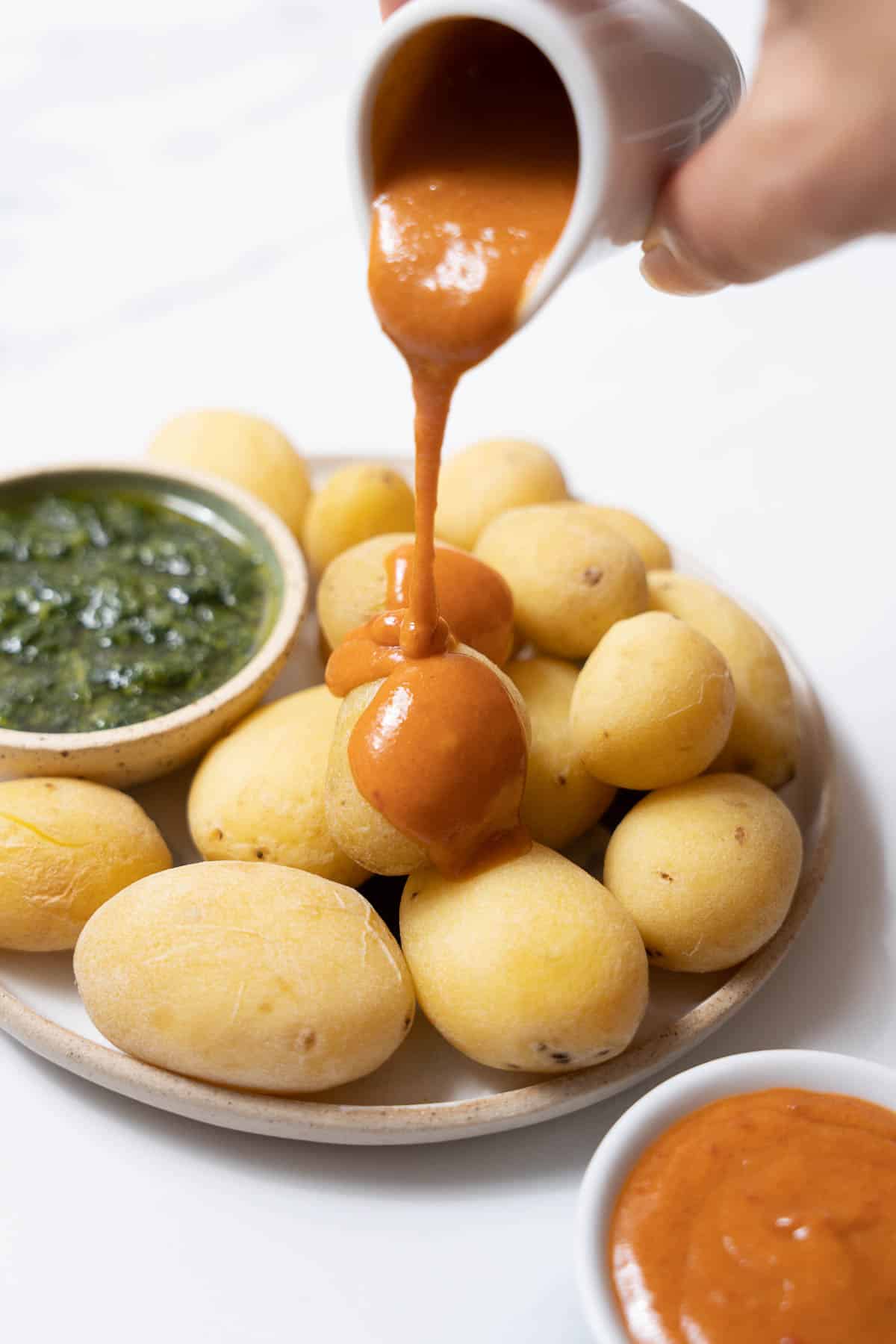
Expert Tips
- The best part of papas arrugadas is the salty crust that forms on their skin. It’s barely visible, but there! Experiment with different potato varieties and salt/water ratios to get the right balance!
- The authentic way to make papas arrugadas is by boiling the potatoes in seawater. Fresh water was often short on the islands, and locals had to make do with what they had.
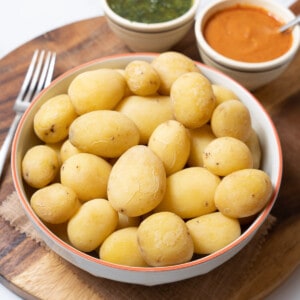
Papas Arrugadas (Canarian Wrinkly Potatoes)
Papas arrugadas are one of the most famous foods from the Canary Islands. Whether visiting Tenerife, Gran Canaria, or any of the other islands, you’ll be sure to taste them–and here’s a simple recipe for making them at home.
Print (images optional)
Pin
Rate
Servings: 4 servings
Calories: 109.14kcal
Instructions
-
Wash the potatoes well and place them in a large pot. Cover with cold water and add the sea salt.
-
Boil the potatoes until just cooked through, about 20 minutes. Add water if too much evaporates.
-
Pour off the water and rest the potatoes on the stove on a very low heat until all water has evaporated and the potatoes are covered in a layer of sea salt.
-
Serve hot with your favorite mojo sauce!
Notes
- The best part of papas arrugadas is the salty crust that forms on their skin. It’s barely visible, but there! Experiment with different potato varieties and salt/water ratios to get the right balance!
- The authentic way to make papas arrugadas is by boiling the potatoes in seawater. Fresh water was often short on the islands, and locals had to make do with what they had.
Nutrition
Serving: 1serving | Calories: 109.14kcal | Carbohydrates: 24.76g | Protein: 2.86g | Fat: 0.13g | Saturated Fat: 0.04g | Polyunsaturated Fat: 0.06g | Monounsaturated Fat: 0.003g | Sodium: 7081.84mg | Potassium: 598.22mg | Fiber: 3.12g | Sugar: 1.1g | Vitamin A: 2.83IU | Vitamin C: 27.93mg | Calcium: 21.39mg | Iron: 1.17mg
Photography by Giulia Verdinelli
[ad_2]
Source link